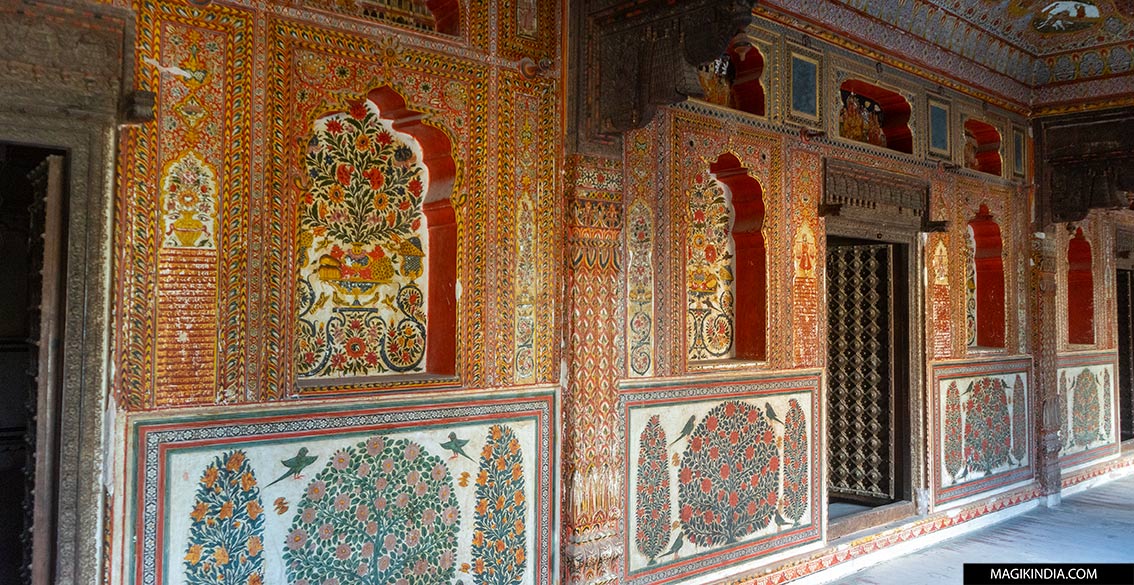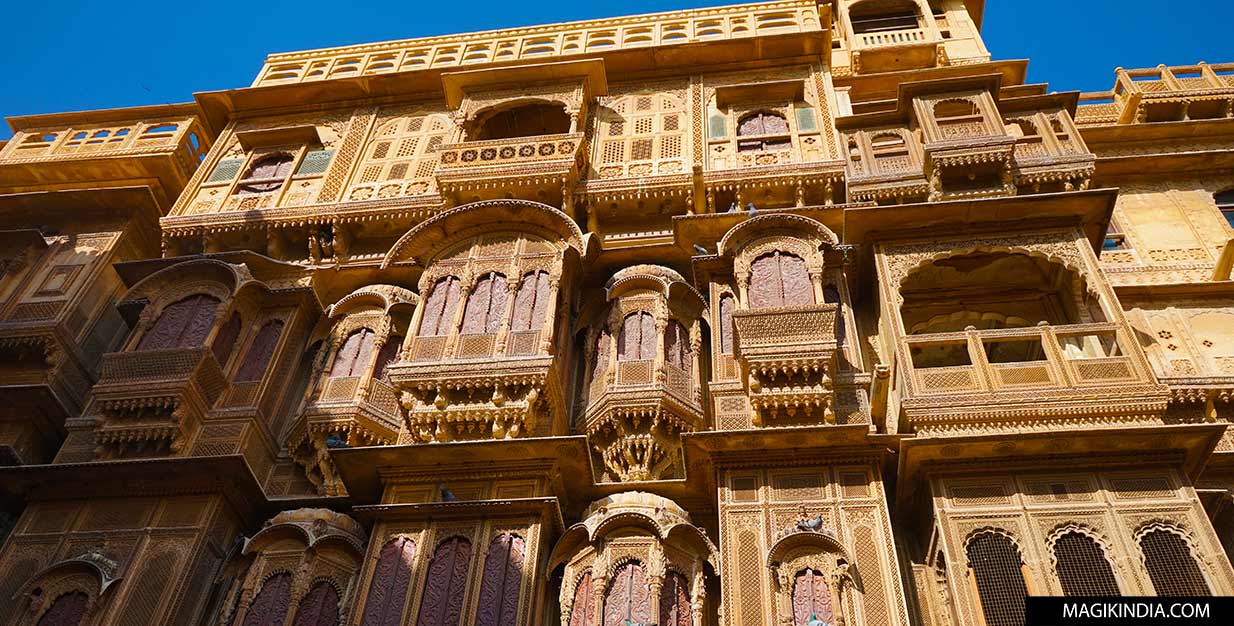
The best places to visit 100km around Jaipur
If you want to extend your trip to the region of Jaipur (Rajasthan) and if you are looking for places to visit within 100km around the pink city, here are some ideas for getaways that will not disappoint you: historic sites, a sumptuous palace, a city of nawabs and a haunted fort…
Palace of Samode, luxury and refinement

We begin the visit of the Jaipur region with the village of Samode, about forty kilometres from the pink city. Nestled in the Aravallis mounts, the village of Samode owes its reputation to its palace of the same name, a splendid example of royal Indo-Saracenic architecture of the 19th century, still owned and managed by rajpoutes linked to the royal family of Jaipur.

The noble owners of this palace are among those families in India who have maintained and developed their heritage by converting their palace into a 5-star hotel.
If your budget allows it, you can fully enjoy of the place by reserving one of the sumptuously decorated rooms, otherwise you can always visit the different rooms opened to the public in the presence of the hotel’s butler for only one hundred rupees.
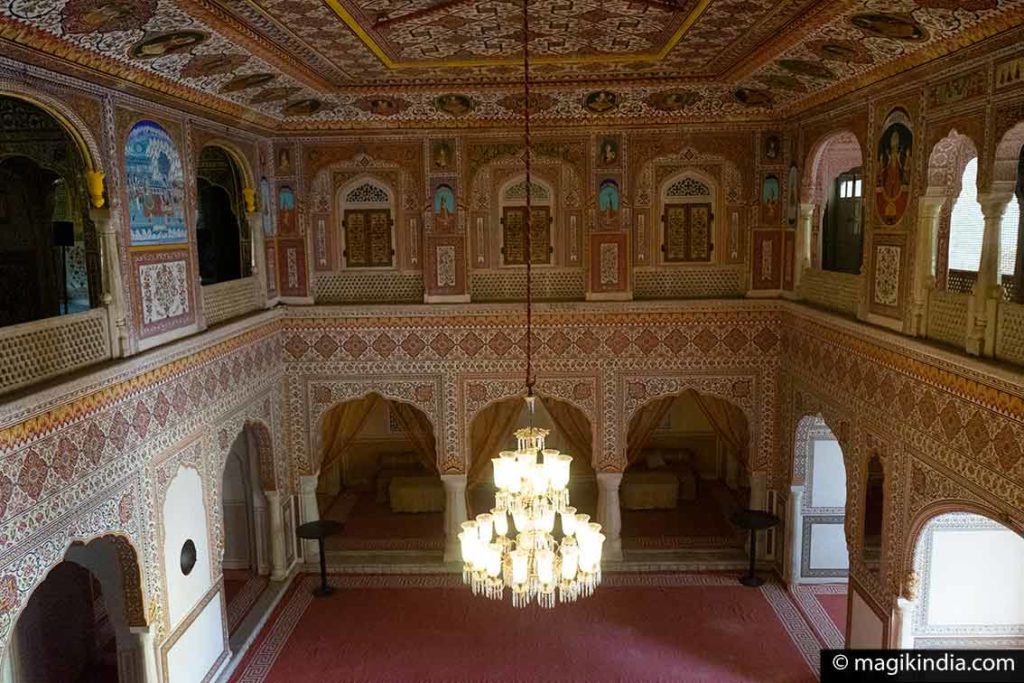
And what a visit! Difficult not to be amazed of the refinement and luxury of the palace’s interiors: floors in marble, finely decorated pillars, old carpets and furnishings wisely chosen according to the atmosphere of each room. However, the two crown jewels of the palace are undoubtedly its room of mirrors (Sheesh Mahal) inlaid with finely worked mirrors and its Durbar hall (courtroom) decorated with beautiful frescoes relating Hindu mythology.

A paved path from the palace will lead you to the old ruined fort of Samode offering you a breathtaking view of the valley.
Leaving the palace, take the time to stroll in the village of Samode, it is famous for its block-printing textiles and also for the making of ‘chourias’, the colourful Indian bracelets.

Chand Baori, India’s oldest step well

On the road to Agra, 90 km from Jaipur, travellers usually stop at Chand Baori d’Abhaneri, India’s largest and oldest step-well.
The construction of this building is attributed to the legendary king Chanda during the 8th and 9th centuries AD, but there are no documents attesting to its sponsor. The well has 3,500 narrow steps arranged in perfect symmetry, which descend to a depth of 20 meters where the temperature is around 5 degrees less than at the top.
The step-well, which was only for the water storage, was then arranged for the royal family with the construction of a small Haveli on the upper floors. During the Mughal era (18th century), columned arcades and an art gallery were added at the top of the Chand Baori.

Step-wells, called baori or bawri in Hindi, are typical of the regions of north-west India which, due to their climatic and geographical conditions, regularly experienced water shortages. Today, these wells are no longer in use, but the perfect architecture of these buildings continues to attract and amaze travellers.
We leaving the well on the right, there is a Hindu temple just as old as the well, dedicated to Harshat Mata, considered the goddess of happiness and joy.

The temple has been considerably damaged a large part of the statues, which decorated the temple are now in the Jaipur museum. However, those that are still in place bear witness to the artistic refinement of this period of time.
Harshat Mata, which is still a temple in activity, welcomes a large number of local worshipers at its annual three-day fair in honour of the goddess.
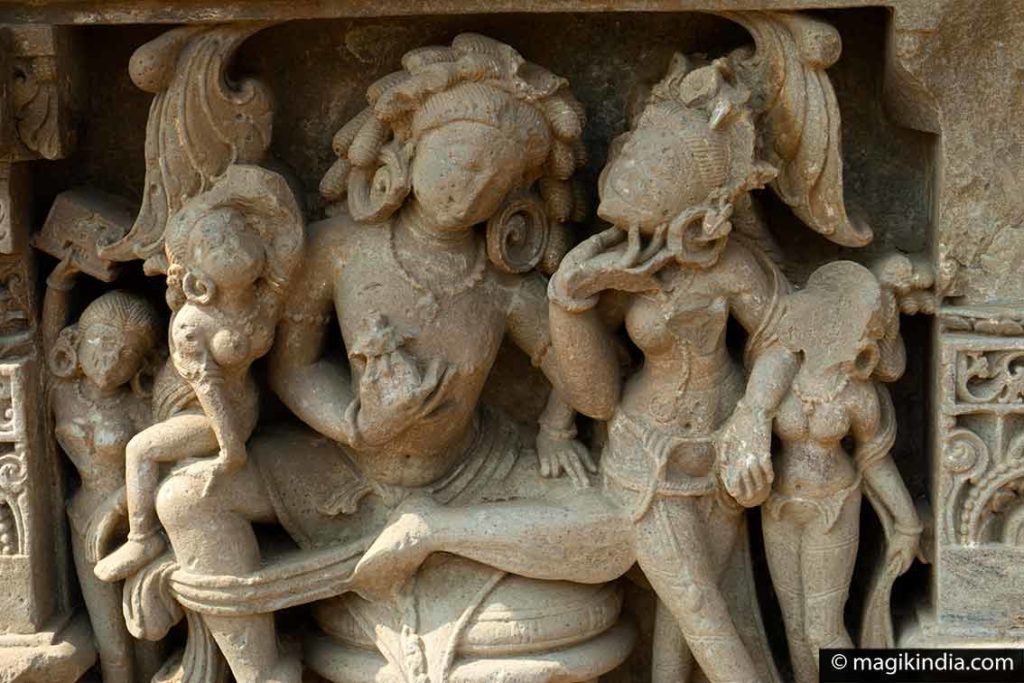
Bhangarh, India’s most haunted fort
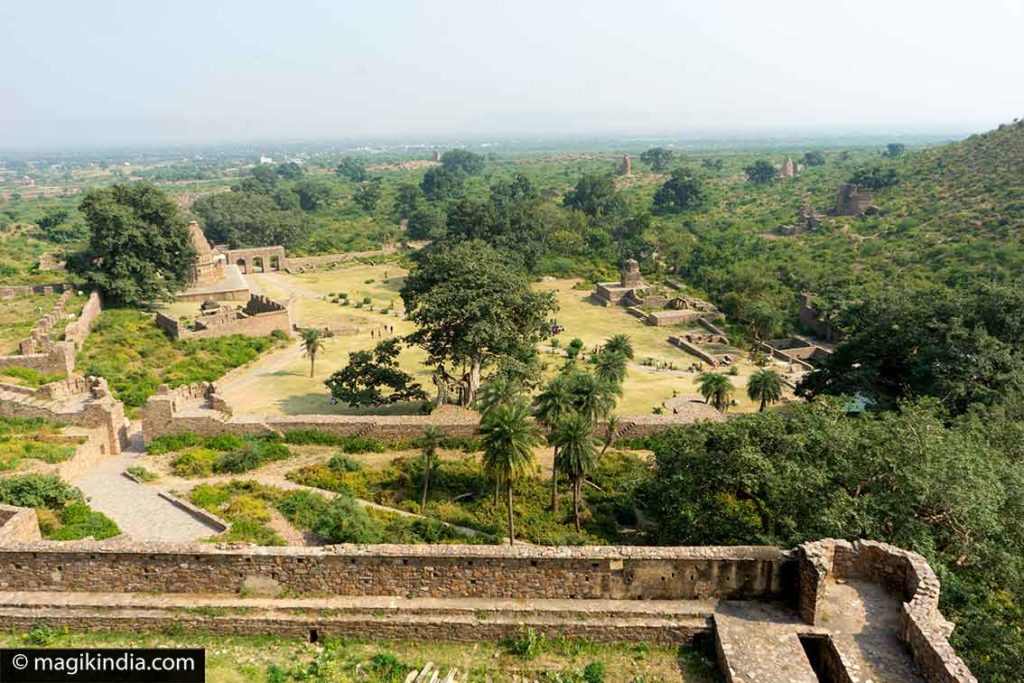
In the direction of the Sariska tiger reserve, 84 km from Jaipur, we come across the fort of Bhangarh. It was built in the middle of the 16th century CE by the Rajput sovereign, Bhagwant Das, as a residence for his second son, Madho Singh, who was the younger brother of Man Singh, the general of the Mughal emperor Akbar. With the fall of the Mughal Empire, the fort was annexed in 1720 by Jai Singh II, the founder of Jaipur and, after the famine of 1783, it fell into oblivion.

The fort, which was at that time protected by three successive ramparts, did not stand the test of time; some Hindu temples are still standing like that of Gopinath as well as vestiges which were formerly stalls, restaurants, havelis, a mosque and a palace.

Bhangarh Fort is best known for being the most haunted in India. Moreover, on the sign at the entrance, it is written that the place is strictly prohibited between sunset and sunrise, because it is believed that spirits invade the fort after dark.

The origin of this belief goes back to a local legend. It is said that a priest fell madly in love with a princess of unequaled beauty. But unable to attract the attention of the beautiful princess, he tried to use black magic. One fine morning, when she came back from the market, the priest cast a spell on the vial of perfume she had just bought so that she could fall in love with him. However, the princess came to know that and immediately got rid of the bottle. The spell turned against the priest who was turned into a rock; he just had time to curse the princess, her family and all the surrounding villages.
Since then, locals believe that because of this curse all the constructions in and around the fort (except the temples) have seen their roofs collapse and, consequently, nobody dares to build anything around the fort of Bhangarh.
Tonk, the little Lucknow
Tonk is a destination still little known, 96 kilometers from Jaipur, and yet this small town also known as ‘Lucknow of Rajasthan‘, has plenty of treasures left by the descendants of the Pashtuns of Afghanistan.

The must-see in Tonk is the Sunehri Kothi (the golden abode) built in the old palace complex by the Nawab of Tonk, Mohammed Ibrahim Ali Khan (1867-1930), to give recitals of poetry, dance and music. This magnificent room is decorated with inlaid mirrors, gilded glass, and stained glass from Belgium.

Another emblematic monument of Tonk is its Jama Masjid started in 1246 CE by the Nawab Amir Khan and completed in 1298 by his son Nawab Wzirudhoula. With its four imposing minarets and delicate decorations, it is certainly one of the most beautiful mosques in India.

Tonk is also home to the first Arab-Persian Research Institute in India engaged in the promotion of Arab and Persian studies. This institute was established by the government of Rajasthan in 1978 for the purpose of preserving Persian and Arabic manuscripts found throughout the state of Rajasthan. The main attraction of this institute is the calligraphy of art made on hair, on grains of rice and sesame and inside transparent glass bottles.

30 kilometers from Tonk, you come across a completely astonishing monument, the Hathi Bhata, a huge monolith of an elephant built in 1200 CE by a certain Ram Nath Slat. How do we know? The story of this beautiful sculpture is engraved on the right ear of the elephant!

If you have some time left for the visit, continue 60 km further on, towards the town of Bisalpur known for its Gokarnesvara temple, built by the ruler Chahamana Vigraharaja IV in the 12th century CE. It is now located on the shores of the artificial lake of Bisalpur and it can sometimes be flooded.
Just before Bisalpur, be sure to stop at Todaraisingh where you can admire the Hadi Rani Boari, a rectangular stepped well from the 12th and 13th century.



